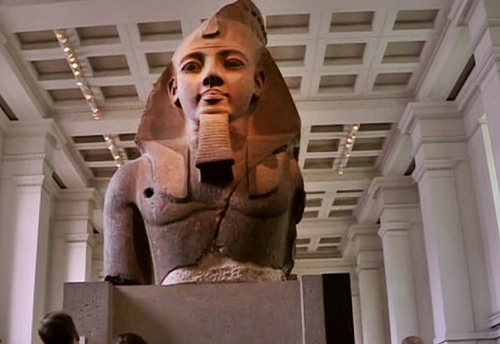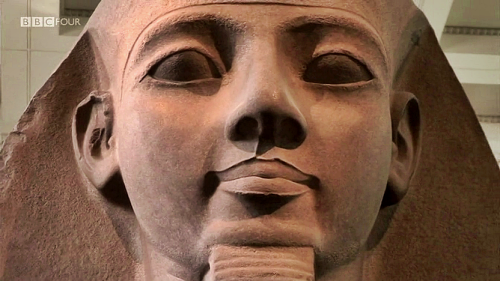Archaeology: A Secret History - BBC Four Episode 2 “The Search for Civilisation”The beginnings of ar
Archaeology: A Secret History - BBC Four Episode 2 “The Search for Civilisation”The beginnings of archaeology; “imperialist plunder”The Younger Memnon -in the British museum- is a colossal granite statue from the ancient Egyptian mortuary temple, the Ramesseum at Thebes. It depicts the pharaoh Ramesses II, “the Great” (ruled 1279-1213 BC). The statue lost its body and lower legs and it is one of a pair which originally flanked the doorway of the Ramesseum. The head of its pair is still at the Ramesseum (picture n. 3) -its body is restored. The statue was cut from a single block of two-coloured granite.The Younger Memnon was retrieved from the Ramesseum by the italian explorer Giovanni Belzoni in 1816. He removed the bust and then shipped it to England. It took him 17 days and 130 men to tow it to the river. He used levers to lift it onto rollers. Then he had his men distributed equally with 4 ropes drag it on the rollers. The hole on the right of the torso is said to have been made by members of Napoleon Bonaparte’s expedition to Egypt at the end of the 18th century, in an unsuccessful attempt to remove the statue. The 18th century would see Britain rise to be the world’s dominant colonial power, and France becoming its main rival. Both countries wanted to outdo each other, from empire to archaeology. They strived to build the very best collections in the entire world. This was about national pride. When the Younger Memnon arrived to England they had nowhere to put it. It sat out in the rain and in the pollution of London. It was later acquired in 1821 by the British Museum and was at first displayed in the old Townley Galleries (now demolished) for several years, then installed in 1834 in the new Egyptian Sculpture Gallery. It was the first public collection of Egyptian antiquities and it had a massive impact on the public. People looked at these objects not as antiquities, but as symbols of British victory. One of the obelisks indeedhad engraved down the side “Captured by the British Army”.Pictures n. 4, 5: Belzoni’s drawings: The Younger Memnon being hauled from ThebesThe British Museum, London, UK -- source link
#richard miles#ramesses ii#the ramesseum#thebes#giovanni belzoni#british empire#ancient egypt#napoleon bonaparte#bbc four#screencap




